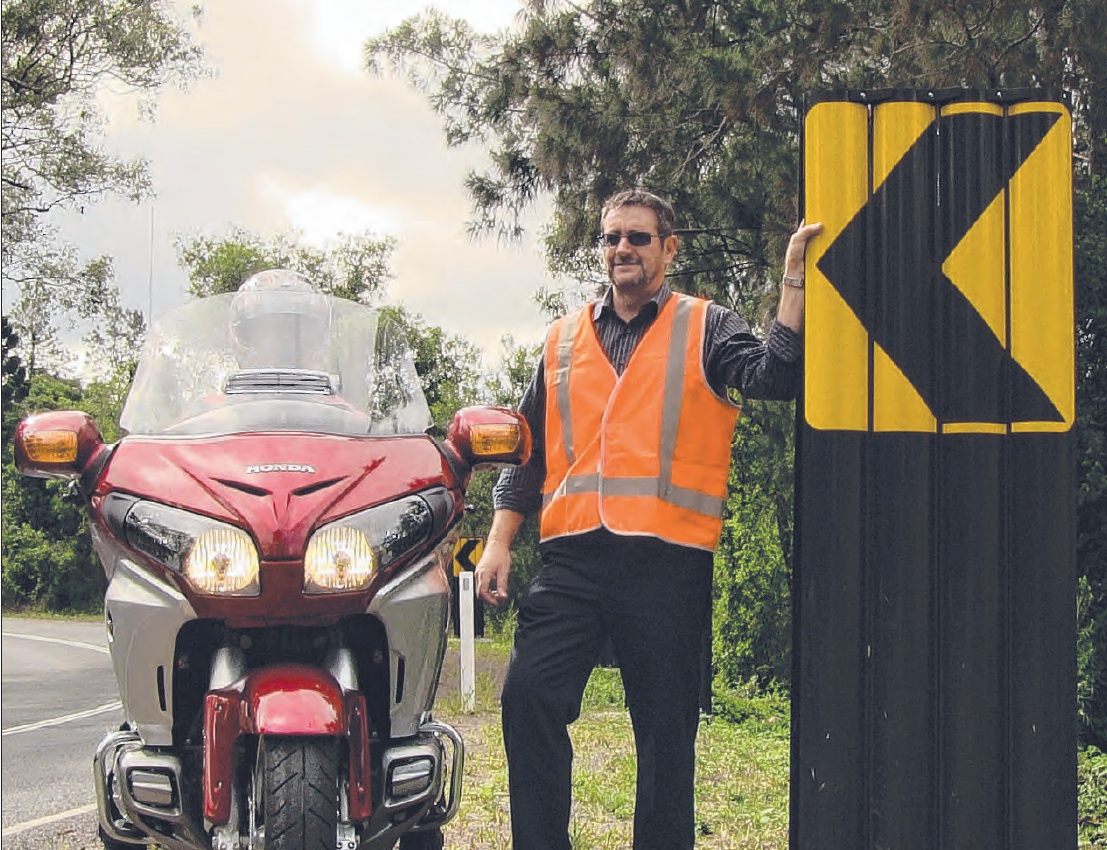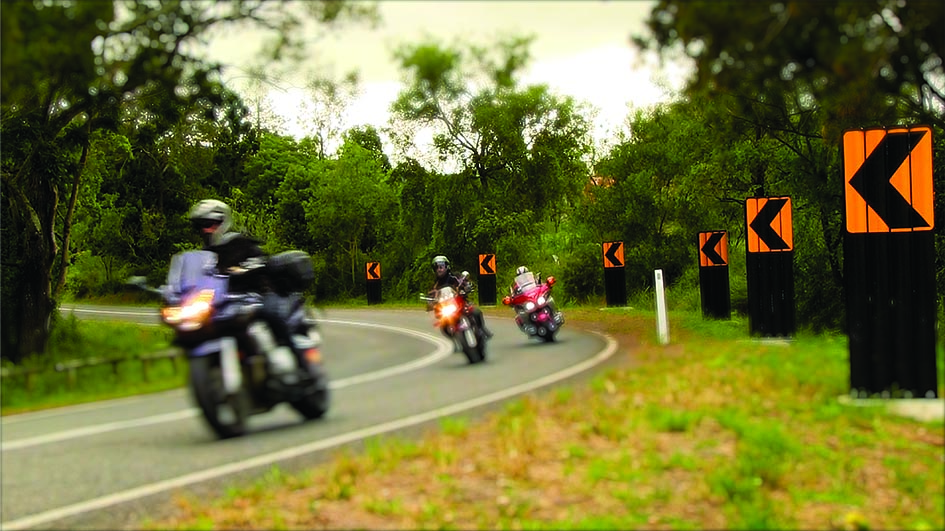Flexible road signs that reduce impact in motorcycle crashes are being trialled at several motorbike hotspots around the country.
The Chevroflex signs bend and then return to their original position after impact says Peter Nuttall (pictured below) of Brisbane company RUD Chains which distributes the Glasdon Chevroflex signs and makes the steel anchor points.
They are installed at three sites in Queensland, two sites in Tasmania and two sites in Western Australia.
While state transport departments are still considering the roll-out of these safety signs, RUD has received approval from the Queensland Traffic Engineering Practice Unit for Chevroflex use across the whole of the state after a successful two-year trial.
Chevroflex is made of large black upright panels that provide a wider angle of approach than traditional metal chevron signs. It gives the appearance of being larger and wider, making it more visible from a distance.
The British-made signs have won road safety awards in the UK and have been used throughout Europe for 25 years.
RUD spokesman Keith Lawrence says “sales to date have been very poor, but we are beginning to get some traction”.

He cited Queensland Transport figures which show that one in three motorcycle fatalities is the result of riders running off the road and hitting roadside obstacles.
While there is no specific data related to road signs, he says roadside “furniture” has been identified as a significant contributor to motorcycle rider casualties.
Another advantage of the signs is the lower cost of maintenance as the signs rarely need to be fixed after a crash.
The hi-vis signs can be installed quickly, slotting into a steel assembly made by RUD Chains.
Repairs can be done with a key and often require only one person with no excavation or lifting required.
The signs have been tested with impact over 100km/h, in extreme heat conditions and in a wind tunnel tested to see if they remain upright and visible in high winds.


